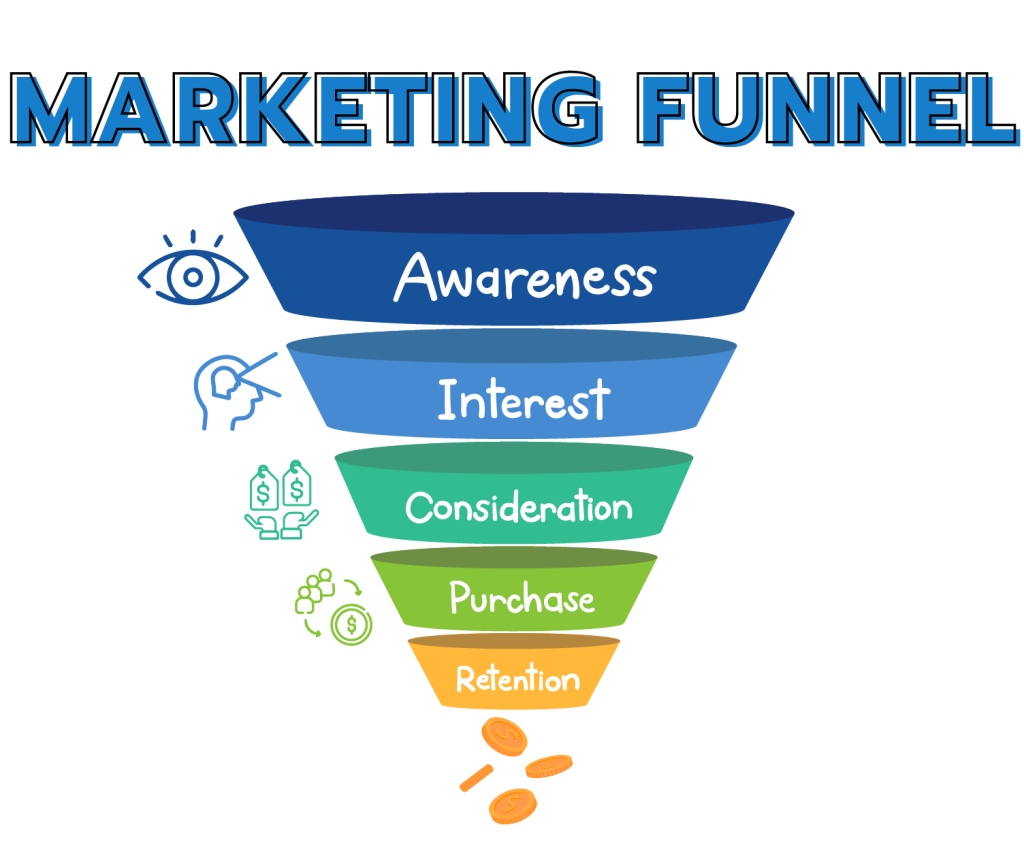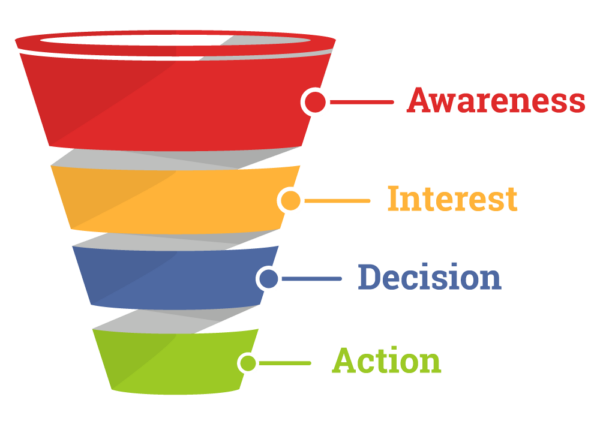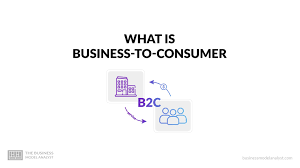In today’s competitive business landscape, every marketer must understand the concept of the marketing funnel and how it can help generate more sales. The marketing funnel is a model that represents the customer journey from becoming aware of a business, service, or product to making a purchase. It visualizes the narrowing down of the audience as they progress towards the final stage of making a purchase decision.

What Is a Marketing Funnel?
A marketing funnel is a simplified framework that helps marketers understand their target audience, identify weaknesses in the customer journey, and contextualize marketing results. The funnel consists of several stages through which potential customers pass before becoming loyal customers. Although customer journeys can be varied and complex, the marketing funnel provides a structured approach that allows marketers to optimize their strategies and increase sales.
The Stages of the Marketing Funnel
While there are various models of the marketing funnel, one of the most commonly used is the AIDA model: Awareness, Interest, Desire, and Action. However, for simplicity, we can break down the marketing funnel into three main stages:
- Top of the Funnel (ToFu): This is the stage where people become aware of the problem that your product or service can solve. The goal here is to introduce your business, service, or product to potential customers and create brand awareness.
- Middle of the Funnel (MoFu): At this stage, prospects have identified their problem and are actively seeking solutions. They are interested in your product or service and are considering their options.
- Bottom of the Funnel (BoFu): This is the final stage where prospects make a decision and become customers. They have evaluated their options and are ready to make a purchase.
Let’s take a closer look at each stage of the marketing funnel and explore strategies to optimize them.
Top of the Funnel Marketing
The top of the funnel (ToFu) is all about creating brand awareness and introducing potential customers to your business, service, or product. It’s crucial to focus on the quality of your audience rather than just the quantity. To do this, you need to define your target customers.
Define Your Target Customers
Start by analyzing your existing customers to understand their demographics, interests, and behaviors. Google Analytics can provide valuable insights into your audience’s age ranges, genders, locations, languages, and interests. Additionally, market and competitor research can help you gather more information about your target audience.
Once you have gathered this data, you can create buyer personas – fictional profiles that represent your ideal customers. These personas will help you target your marketing campaigns more effectively.
Increase Brand Awareness
To increase brand awareness, you can use various tactics such as advertising, inbound marketing, digital PR, social media marketing, online communities, guest blogging, events, and newsletters. However, it’s important not to spread yourself too thin. Focus on one or two tactics that align with your buyer personas and make the most efficient use of your resources.
Creating search engine optimized content is crucial for brand awareness. By using keyword research tools like Semrush’s Keyword Magic Tool, you can identify the topics and questions your target audience is searching for. This allows you to create valuable and engaging content that meets their needs and raises awareness of your brand.
Additionally, you can analyze your competitors’ top-performing pages to gain insights into the keywords they are targeting. This can help you generate content ideas and improve your search rankings.
Engage Your Audience
Engaging your audience is key to moving them through the marketing funnel. You can achieve this by providing valuable content, answering their questions, and establishing yourself as an authority in your industry. Content formats like blog posts, videos, and social media posts can help you engage your audience and keep your brand on their radar.
It’s important to include clear calls to action (CTAs) in your content to guide your audience to the next stage of the funnel. Encourage them to sign up for your newsletter, follow you on social media, or explore your products or services further.
Middle of the Funnel Marketing
The middle of the funnel (MoFu) is where prospects have identified their problem and are actively researching solutions. Your goal at this stage is to educate your prospects, guide them towards a buying decision, and differentiate your brand from competitors.
Educate Your Prospects
To educate your prospects, provide them with valuable resources such as how-to guides, product overviews, case studies, and success stories. These resources should address their questions and concerns and highlight the unique value your product or service offers.
Keyword research is essential for creating educational content. Use tools like Semrush’s Keyword Magic Tool to identify commercial keywords that people use to research products or services. This will help you understand what your prospects are searching for and enable you to create content that meets their needs.
Manage Your Reputation Online
Prospects often seek information from their peers, influencers, and industry experts during the middle of the funnel stage. It’s crucial to manage your online reputation by collecting positive reviews, collaborating with relevant publishers, and addressing any negative feedback. This helps build trust and credibility, encouraging prospects to choose your brand over competitors.
Monitor your brand mentions across the web using tools like Semrush’s Media Monitoring app. This allows you to track sentiment and take necessary actions to maintain a positive reputation.
Bottom of the Funnel Marketing
The bottom of the funnel (BoFu) is the final stage where prospects make a purchase decision and become customers. Your focus at this stage is to optimize conversion rates, improve your search rankings, and turn customers into loyal advocates.
Build Awesome Landing Pages
Landing pages play a crucial role in converting visitors into customers. Optimize your landing pages for target keywords, reduce barriers to purchase, and provide persuasive content that reassures customers they are making the right decision. Use tools like Semrush’s On Page SEO Checker to get suggestions for improving your landing pages.
Turn Customers into Loyal Customers
The customer journey doesn’t end after a purchase. To encourage repeat purchases and referrals, focus on building strong relationships with your customers. Implement loyalty and referral programs to incentivize repeat purchases and recommendations. Additionally, provide excellent aftercare through customer support and post-purchase content to enhance customer satisfaction and maintain engagement.
Marketing Funnel Metrics
To measure the effectiveness of your marketing funnel, set goals for each stage and track relevant metrics. These metrics can include page views, impressions, click-through rate (CTR), engagement, time on page, bounce rate, conversion rate, and return on ad spend (ROAS). Use tools like Google Analytics to monitor and analyze these metrics.
Different Types of Marketing Funnels
Various types of marketing funnels cater to specific tactics or goals. Digital marketing funnels focus on online activities, content marketing funnels revolve around content strategies, while conversion funnels and sales funnels focus on specific user actions and sales procedures. Define the type of funnel that aligns with your business goals to create a more tailored marketing strategy.
The Marketing Funnel vs. the Marketing Flywheel
While the marketing funnel has been a popular concept, some marketers have embraced the marketing flywheel as a more accurate model. The marketing flywheel emphasizes the customer at the center and views them as a driving force for business growth. It focuses on attracting, engaging, and delighting customers to create a cycle of sales and loyalty.
Create Your Marketing Funnel
Building a successful marketing funnel requires thoughtful planning, understanding your target audience, and leveraging data-driven insights. Tools like Semrush can provide valuable insights and support throughout the process. By optimizing each stage of the funnel and continuously improving your strategies, you can increase sales and grow your business.




No comments! Be the first commenter?